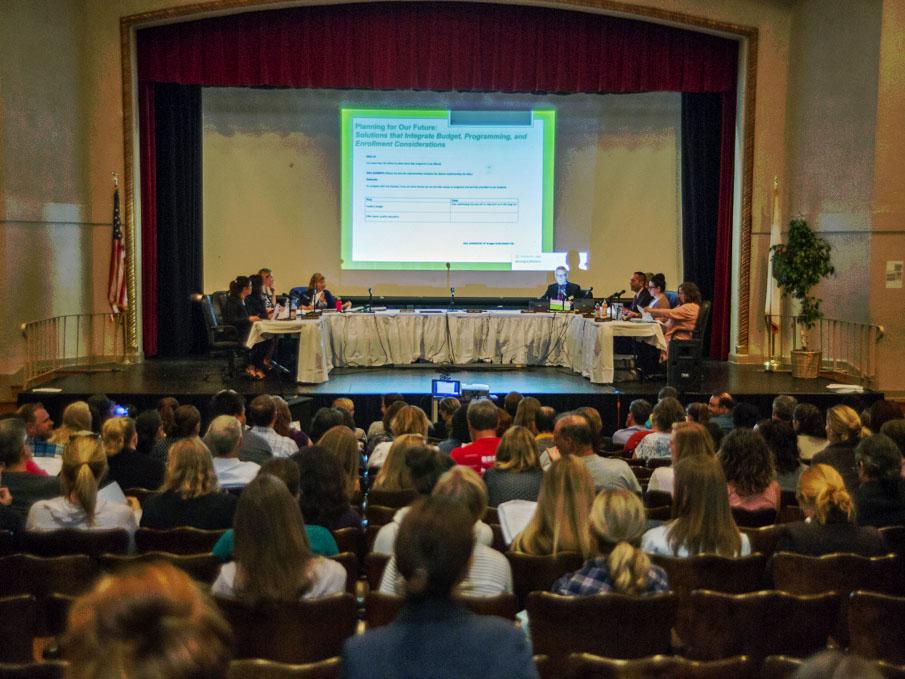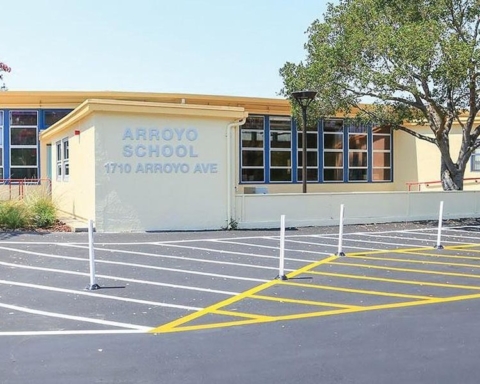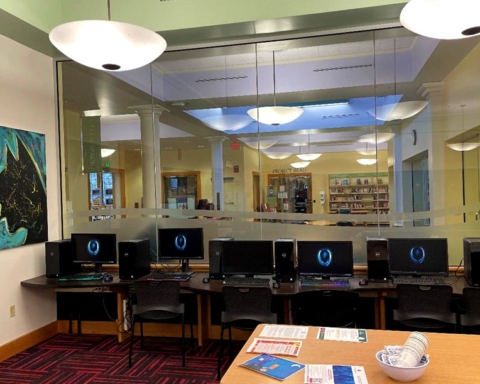Redwood City School District trustees and the public last night reviewed proposals ranging from closing or merging a half dozen schools to renting out unused classroom space as the board grapples with major cuts to stave off insolvency.
Board members and a large crowd of parents and staff gathered in the auditorium at McKinley school heard two dozen proposals from an advisory council that has been at work since August to suggest ideas for reorganizing the shrinking district. It has lost 1,500 students over the past six years to charter schools, families being priced out of the Bay Area and other factors. State funding is, in part, tied to head count and the Redwood City district is further handicapped compared to neighboring districts by the way property taxes are allocated.
The bottom line, Superintendent John Baker said, is that, by Dec. 15, the district needs to come up with a plan to show the San Mateo County Office of Education where some $10 million in cuts will be made over the next two years.
Baker emphasized to the audience that no recommendations or decisions have been made yet, but said “There are going to have to be some consolidations of schools. We cannot get away from that.” The school district is being monitored by the county office, he added, “and we don’t want the county to come in and take us over.”
The board is slated to act at a Nov. 28 meeting, before which the district staff will consult with school principals and the advisory committee to come up with concrete recommendations. Two community forums are also planned: Oct. 22 at the McKinley Institute of Technology and Oct. 25 at Taft School. Both meetings are from 6 p.m. to 8 p.m.
District enrollment since the 2012 school year has dropped from 9,136 to 7,557, with corresponding reductions in revenue. Among other categories, the district faces rising costs for workers compensation, pensions, special education, and according to a projection earlier this year, faces multi-million-dollar deficits unless reductions are made and maintained over several years.
Several ideas that were presented involved various scenarios for closing or merging schools, or consolidating specialty programs at one site. Closing a school could save $600,000 to $1 million, depending on the site, and a larger enrollment at fewer remaining schools might allow elective offerings to be expanded. On the other hand, geography needs to be taken into account in closing or reorganizing neighborhood schools, trustees said, to avoid creating hardships.
Some of the proposals might present legal or other feasibility problems. One idea, for example, was to raise the rent for charter schools, but it is already at the maximum, according to Trustee Alisa MacAvoy. Closing summer school would save $674,000, but the impact on migrant and special education programs would have to be addressed. Closing the district office and moving its functions to MIT could generate an estimated $1 million, but funding to remodel the school space for a business office would have to be identified.
Among the various combinations and mergers proposed: Creating one large middle school at Hoover; consolidating Garfield, Taft, Fair Oaks and Hoover students at two locations (K-5) and creating one middle school at Taft; combining the Spanish immersion programs at Adelante and Selby Lane at the latter school; expanding North Star Academy by letting it grow into the MIT building; or closing and renting out Clifford School. That would save an estimated $1,260,000 per year but there’s a risk of a “domino effect” if students are relocated far from the school, as well as the loss to charters and San Carlos schools.
On the other hand, expanding pre-school and after-school care might make the district more competitive with charter schools, as well as meet a community need, trustees observed. Consolidating all the charters into one “hub” would free up other school sites for possible mergers and potentially improve operational efficiency.
Trustee Dennis McBride said he’d like to see more information on where students live and how they’d be impacted by various proposals. “We all know that closing schools is a very emotional thing,” he said.
MacAvoy expressed hope that, while change is hard, schools will emerge improved in a right-sized district.
“It’s time for us to be real about what our enrollment is and how many schools we can have,” she said. The decisions that will be made shouldn’t be just tweaking but finding ways to improve, she added.
Asked for a timeline on the implementation of changes, Baker said specifics would depend on the school and the number of students involved, but “by mid-February, we will know what’s happening.”






